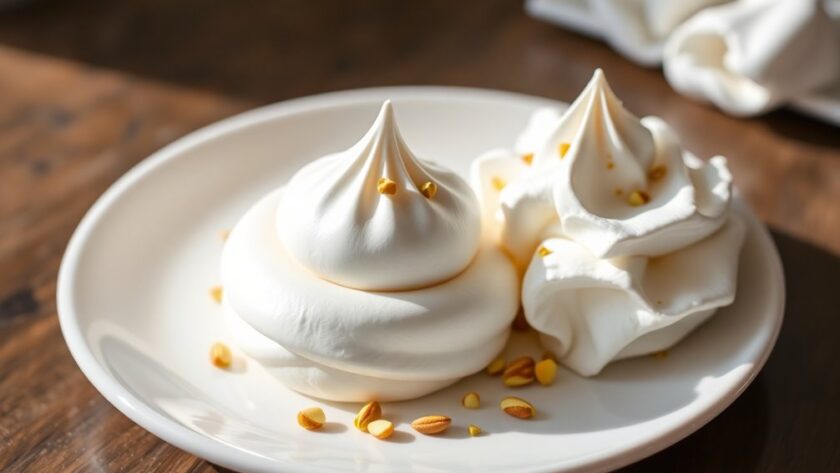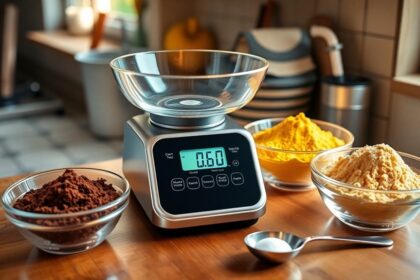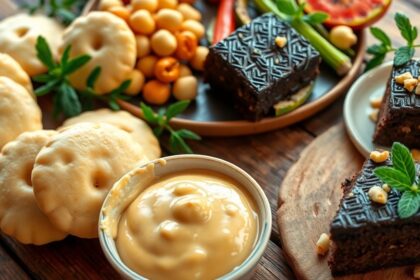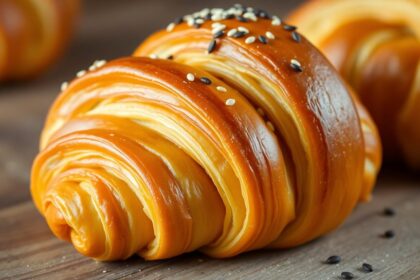You'll find three main types of meringue—French, Swiss, and Italian—each with its own unique technique. French meringue is the simplest, airy and light, achieved by whipping egg whites with sugar. Swiss meringue involves warming egg whites and sugar over heat for a stable mixture, ideal for toppings. Italian meringue is the most stable of the three, combining hot sugar syrup with whipped egg whites for a creamy texture. Each technique has its applications, from cookies to pies. Stick around to uncover tips and tricks for mastering these delightful meringues.
Overview of Meringue Types
Meringue, while seemingly simple, offers a variety of textures and uses that cater to different baking needs. The three primary types are French, Swiss, and Italian meringue, each differing in preparation and stability.
French meringue is the easiest to make, involving gradually adding sugar to whipped egg whites for a light, airy texture, but it has the least stability.
Swiss meringue, on the other hand, requires heating egg whites and sugar in a double boiler, resulting in a smoother, denser mixture that's more stable, perfect for buttercream.
Finally, Italian meringue is the most stable, created by pouring hot sugar syrup into beaten egg whites, yielding a soft and creamy texture ideal for frosting and decorations. Mastery of ingredient balance ensures that each type serves unique baking purposes.
French Meringue Technique
While you may think making meringue is a challenging task, French meringue simplifies the process, allowing you to create delightful desserts with ease.
To start, whip egg whites until you reach soft peaks, then gradually add sugar. This step's essential; adding sugar too soon can lead to graininess in your meringue. Incorporating cornstarch for crispness can also enhance the texture of your meringue. Additionally, using room temperature egg whites helps achieve better volume during whipping.
Continue beating until you achieve stiff peaks—this will give your meringue the lightest and most airy texture.
French meringue is typically used for cookies or Pavlova and should be baked at a low temperature of around 200°F for 1-2 hours. This method guarantees a crisp outer shell while keeping the inside airy. The key to a successful meringue lies in achieving stiff peaks, which provide the desired texture and stability for your desserts.
Swiss Meringue Method
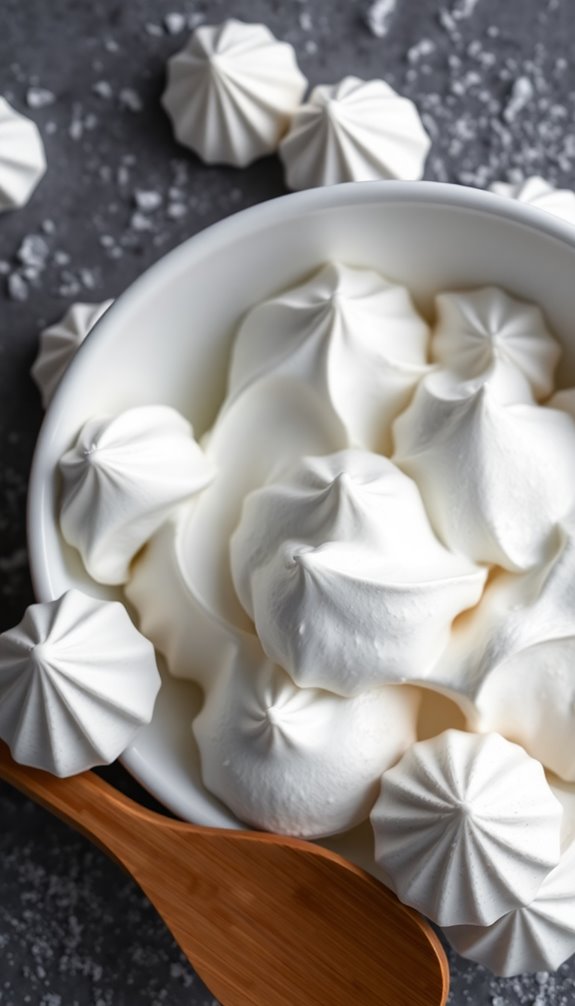
The Swiss meringue method offers a reliable way to create a smooth and glossy meringue that's perfect for various desserts.
To make Swiss meringue, you whisk egg whites and sugar together over a double boiler until the mixture reaches around 130°F, ensuring the sugar fully dissolves. This technique results in a stable meringue with a glossy texture, denser than French meringue, making it ideal for buttercreams and frostings. After heating, remove the mixture from the heat and whip it until you achieve stiff peaks, which takes about 10 to 15 minutes. The evolution of meringue techniques, like that of cheesecake origins, showcases the creativity and refinement in dessert-making. Additionally, using espresso-infused sponge cake can elevate the flavor profile of desserts that incorporate Swiss meringue.
Swiss meringue is versatile and can be used as a filling or topping for desserts like pavlovas and lemon meringue pies, and it's safe for uncooked applications. Additionally, mastering the tempering technique is crucial for ensuring a smooth texture in various meringue applications.
Italian Meringue Preparation
Creating Italian meringue involves a careful combination of whipped egg whites and a hot sugar syrup, resulting in a stable and glossy mixture. Here are three key steps to guarantee success:
- Cook sugar and water until it reaches the soft-ball stage (238–240°F).
- Beat the egg whites to soft peaks before gradually adding the hot sugar syrup.
- Pour the syrup down the side of the mixing bowl to avoid splattering.
The resulting Italian meringue is soft, creamy, and the most stable of the three types, making it perfect for toppings and buttercream frostings. Plus, you can use it immediately without baking, unlike French meringue. You'll appreciate how its glossy texture enhances your desserts! Additionally, the use of high-quality ingredients in your meringue, such as fresh eggs, can significantly impact the final product's stability and flavor. To enhance your meringue, consider using cream cheese frosting for a delicious twist on classic toppings. The chocolate selection is also important, as using high-quality chocolate can elevate the overall dessert experience.
Meringue Tips and Tricks
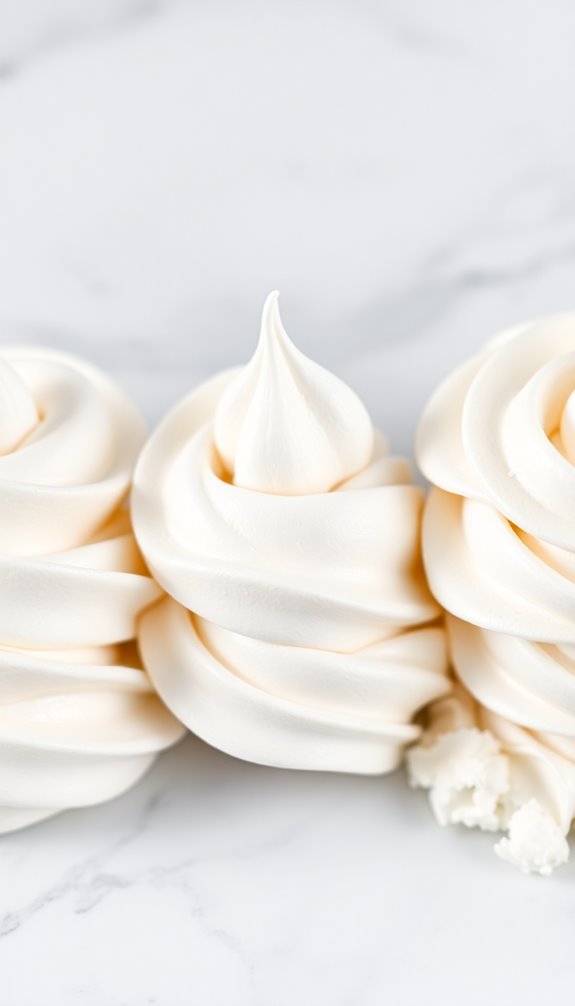
To achieve the perfect meringue, it's crucial to pay attention to a few key details that can make all the difference.
Start by ensuring your egg whites are at room temperature, which makes whipping easier. Carefully separate them from yolks, as any fat can prevent proper aeration.
When making meringue, use superfine sugar, adding it gradually after reaching soft peaks to keep the texture smooth and stable. Incorporating cream of tartar can enhance the strength of your whipped egg whites, much like how the original recipe for chocolate chip cookies emphasized the importance of specific ingredients. Additionally, using high-quality chocolate in dessert recipes can elevate the overall flavor and texture, similar to how it influences the Opera dessert's ganache.
Avoid over-whipping; stop when stiff peaks form to maintain that glossy appearance.
Finally, keep all mixing bowls and utensils impeccably clean and dry—any residue can compromise your Italian or French meringue techniques. Additionally, consider using specific tools to ensure precision and consistency in your meringue-making process.
Happy baking!
Common Meringue Applications
Mastering meringue opens up a world of delicious possibilities in baking. Here are some popular applications you can explore:
- Meringue Cookies: Use French meringue for light, airy treats that melt in your mouth.
- Lemon Meringue Pie: Italian meringue creates a stable topping that holds its shape beautifully, making it a favorite for many holiday desserts.
- Meringue Kisses: Pipe delicate meringue kisses with various flavors and colors for a fun dessert.
French meringue is perfect for pavlovas and soufflés, while Swiss meringue offers a smooth texture for buttercream frostings. Additionally, the rich history and cultural significance of mincemeat pie highlight how traditional recipes can inspire modern baking creations.
The versatility of meringue shines through, whether you're making airy cookies or a luscious lemon meringue pie. You can even incorporate gluten-free options into your meringue-based desserts for inclusive holiday treats. Immerse yourself in these applications and let your creativity shine!
Essential Ingredients for Meringue
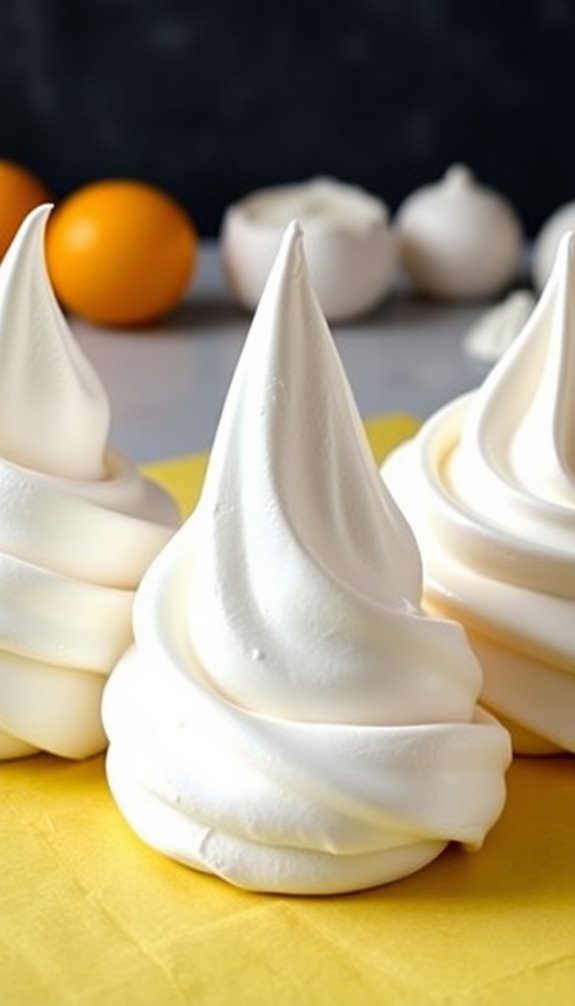
Meringue relies on just a few essential ingredients that work together to create its signature texture. The key players are egg whites and sugar, with superfine sugar being ideal since it dissolves easily, enhancing the smoothness and stability of whipped egg whites.
For French meringue, adding a stabilizer like cream of tartar or vinegar can greatly improve structure. In contrast, Italian meringue incorporates a heated sugar syrup, creating a soft, creamy texture as it's added to the whipped egg whites.
Fresh egg whites yield better volume and stability, while older ones can give a lighter, fluffier texture. These ingredients are vital for successful baking, ensuring your meringue achieves that perfect consistency.
Recommended Tools for Meringue
Creating the perfect meringue isn't just about the ingredients; the right tools play a significant role too. Here are three essentials you'll need:
- Stand Mixer: This is vital for whipping meringue effectively, providing consistent speed and power.
- Candy Thermometer: Use this to monitor your sugar syrup temperature accurately, ensuring you reach the soft-ball stage for Italian meringue.
- Fine-Mesh Sieve: It helps sift superfine sugar, ensuring it dissolves smoothly, contributing to a glossy finish.
Make sure your mixing bowls are made of non-reactive materials like glass or stainless steel.
Plus, using a wire whip attachment in your stand mixer enhances the volume and texture, creating a fluffier and more stable meringue.
Conclusion
Now that you've explored the different types of meringue, you're ready to whip up some sweet magic in your kitchen. Just like a painter with a fresh canvas, you can create delightful desserts using French, Swiss, or Italian techniques. Remember, mastering meringue takes practice, but with these tips and essential tools, you'll be on your way to achieving that perfect, airy texture. So grab your whisk and start experimenting—your taste buds will thank you!

